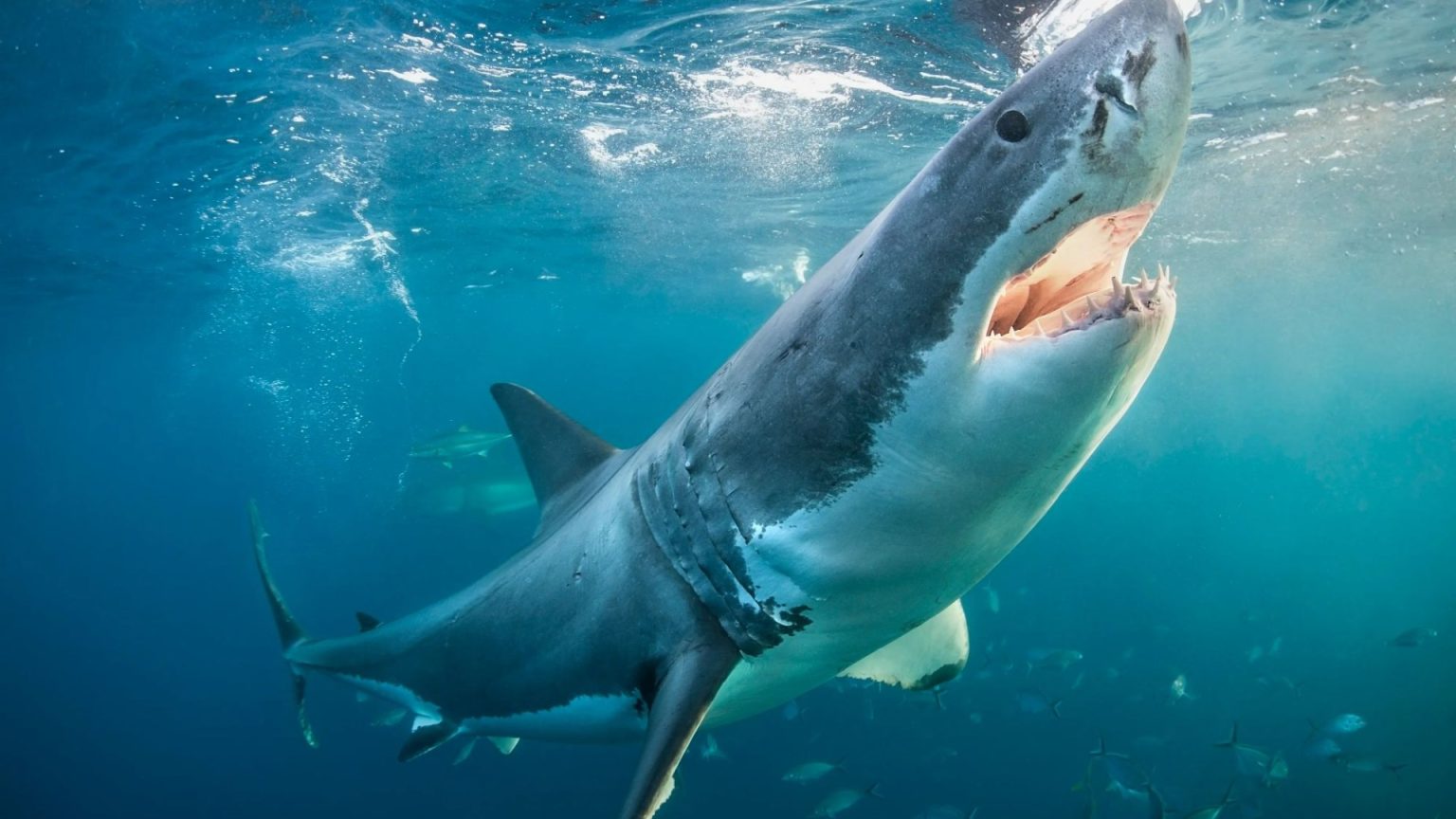The discovery of multiple deceased great white sharks with swollen brains along the eastern coasts of Canada and the United States has sparked a marine mystery, leaving scientists baffled and searching for answers. This unusual phenomenon, characterized by meningoencephalitis, an inflammation of the brain tissue, has raised concerns about a potential new threat to this already vulnerable species. The inflammation impacts the sharks’ cognitive function, hindering their ability to feed and navigate, which can lead to them becoming stranded in shallow waters. The lack of obvious external injuries or readily apparent causes of death further deepens the enigma surrounding these fatalities.
The first case in Canada surfaced in August 2023, when a juvenile male great white was found dead on a beach in Prince Edward Island National Park. Subsequent necropsies revealed the brain inflammation. This marked the first deceased great white discovered by the Canadian Wildlife Health Cooperative in over three decades, highlighting the unusual nature of the event. Four more great whites were subsequently found dead on Canadian beaches, three of which displayed the same brain inflammation. Concurrent with the Canadian discoveries, similar cases began emerging in the US in 2022, with deceased great whites exhibiting brain inflammation washing ashore in Massachusetts, Long Island, and South Carolina.
The scientific community is actively investigating these deaths, concerned about the implications for the great white shark population. While previous instances of brain inflammation have been observed in other shark species, those cases were typically linked to identifiable bacterial infections. The absence of such clear-cut causes in the great white deaths underscores the unique nature of this situation. Researchers are exploring various possibilities, including the emergence of a novel pathogen, environmental factors, or other underlying health issues specific to great whites.
One prevailing hypothesis centers around a potential infectious agent, possibly a virus or bacteria, affecting the sharks’ brains. Scientists are conducting genetic sequencing on brain tissue samples to identify any foreign organisms that might be responsible for the inflammation. This meticulous analysis aims to pinpoint the culprit and understand its impact on the sharks’ neurological systems. The urgency of this investigation is underscored by the vulnerability of great white sharks, whose population, while increasing in the North Atlantic due to shifting prey distributions driven by climate change, remains classified as vulnerable globally.
Adding complexity to the situation is the limited understanding of great white shark biology and health. Research on these apex predators has historically been underfunded, leaving significant gaps in knowledge about their vulnerabilities and disease susceptibility. The recent spate of deaths serves as a stark reminder of the need for greater investment in great white shark research to better comprehend their health, behavior, and the potential threats they face. This knowledge is crucial for effective conservation efforts and ensuring the long-term survival of this iconic species.
The current working theory suggests that the increase in great white shark sightings in certain areas, driven by changing water temperatures and prey distribution, may inadvertently contribute to the observed mortality events. A denser population could facilitate the spread of infectious diseases, making outbreaks more likely. Furthermore, the increased presence of great whites in closer proximity to human activities could enhance exposure to pollutants or other environmental stressors that might compromise their immune systems, making them more susceptible to infections. The ongoing investigations aim to unravel these complex interactions and pinpoint the driving factors behind the mysterious brain inflammation.











